Community Work: Large Magellanic Cloud (LMC)
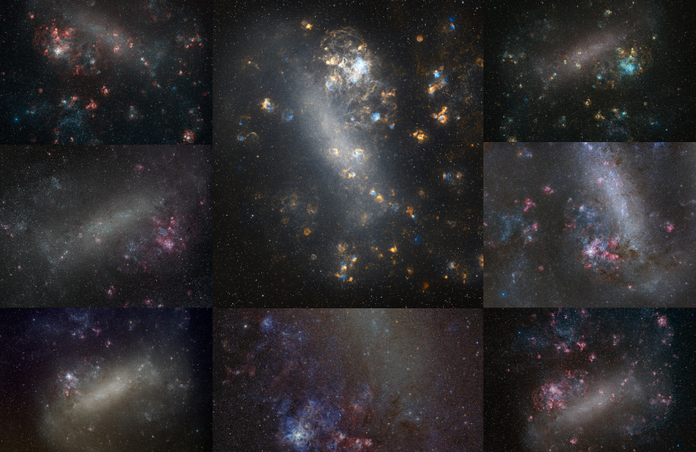
The Large Magellanic Cloud observed and processed by the Telescope Live Community
The Large Magellanic Cloud (LMC) is a dwarf irregular galaxy located on the border between the constellations Dorado and Mensa.
At a distance of around 50 kiloparsecs (≈160,000 light-years), the LMC is the second or third closest galaxy to the Milky Way, after the Sagittarius Dwarf Spheroidal (~16 kpc) and the possible dwarf irregular galaxy known as the Canis Major Overdensity.
It is the fourth largest galaxy in the Local Group, after Andromeda Galaxy, the Milky Way, and Triangulum Galaxy.
The Large Magellanic Cloud is quite large in size, as its name indicates, and easy to find without binoculars for observers in the southern hemisphere. The LMC is also one of very few galaxies that are visible to the naked eye. The galaxy appears as a faint cloud more than 20 times the width of the full Moon. The visible part of the Large Magellanic Cloud is about 17,000 light years across.
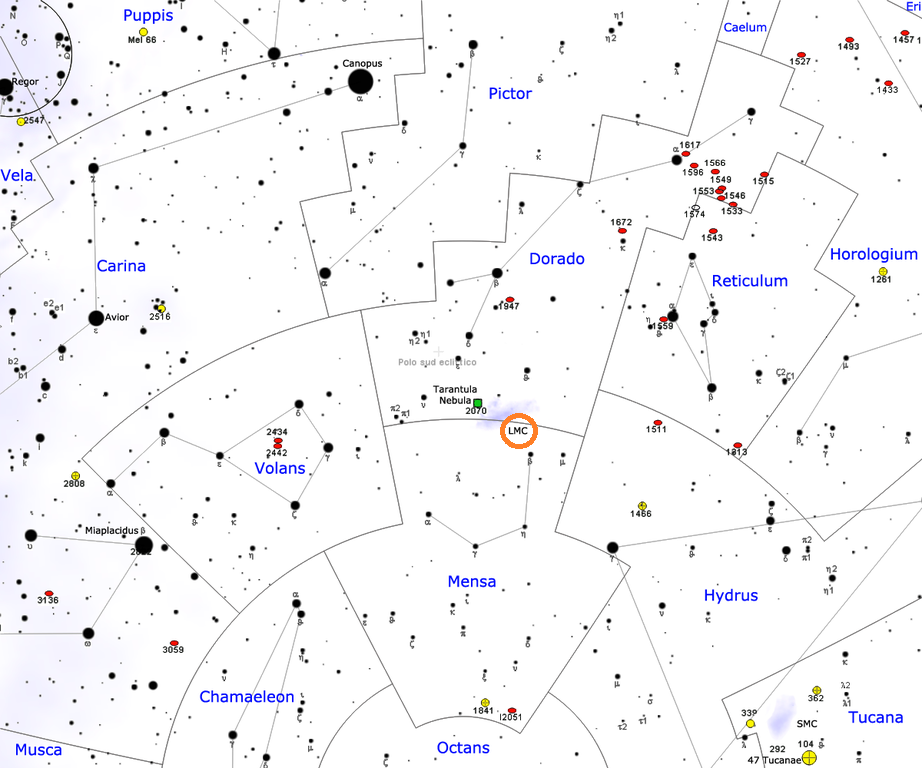
Deep sky objects in the Large Magellanic Cloud
Even if the Large Magellanic Cloud is relatively small in size for a galaxy, it contains a number of notable deep sky objects, including planetary and diffuse nebulae, globular and open clusters.
The galaxy contains roughly 400 planetary nebulae, 60 globular clusters, and 700 open clusters.
The most famous nebula found in the galaxy is the Tarantula Nebula (NGC 2070), the most active starburst region in the Local Group of galaxies. The nebula spans about 700 light years and, if it were as close to us as the Orion Nebula, the Tarantula would appear 55 times larger than the full Moon in the sky.
Another notable star-forming region in the LMC is LHA 120-N 11.
The Large Magellanic Cloud was the site of the nearest observed supernova since the invention of the telescope.
First detected on February 24, 1987, SN 1987A was the brightest supernova seen from Earth in over four centuries. It was classified as a peculiar Type II supernova and was one of the most interesting deep sky objects for astronomers and astrophysicists to observe in the late 20th century.
A supernova remnant, SNR N86, also known as the Lionel-Murphy SNR, is a nitrogen-abundant remnant, also found in the Large Magellanic Cloud. The object was named after Australian High Court Justice Lionel Murphy, to acknowledge his interest in science and because it resembled a cartoonist’s drawing of his nose.
One of the clusters in the Large Magellanic Cloud contains R136a1, currently the most massive and most luminous star known. R136a1 has a mass 265 times that of the Sun and a luminosity of 8,700,000 Suns. The star belongs to the super star cluster R136, located near the Tarantula Nebula. The LMC is also home to WOH G64, one of the largest stars known.

LMC by the Telescope Live Community
LMC Acquired via Advanced Requests
Large Magellanic Cloud by Nik Szymanek
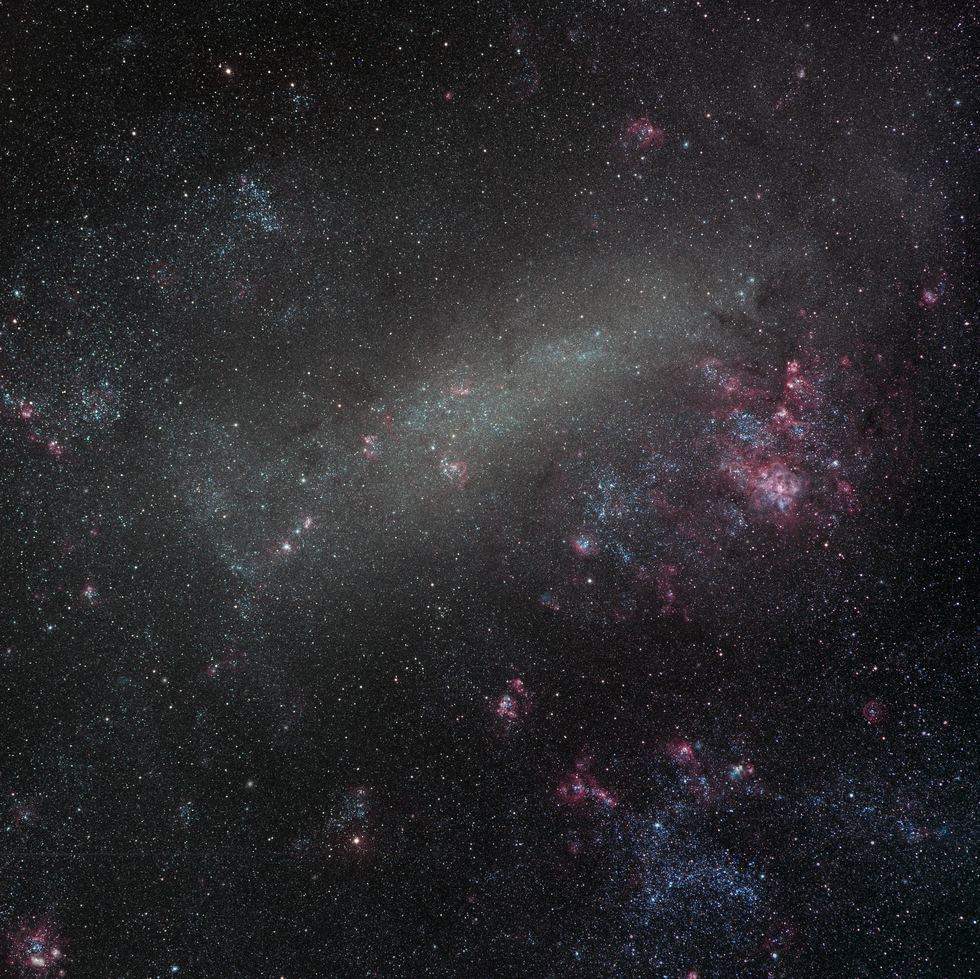
Acquisition: Advanced Requests
Telescope: AUS-2
Filters: Luminance, Red, Green and Blue
Processing: PixInsight, Photoshop
LRGB image of the Large Magellanic Cloud
Lum: 4 x 450s
RGB: 3 x 450s per filter.
Large Magellanic Cloud by Huseyin Avcu
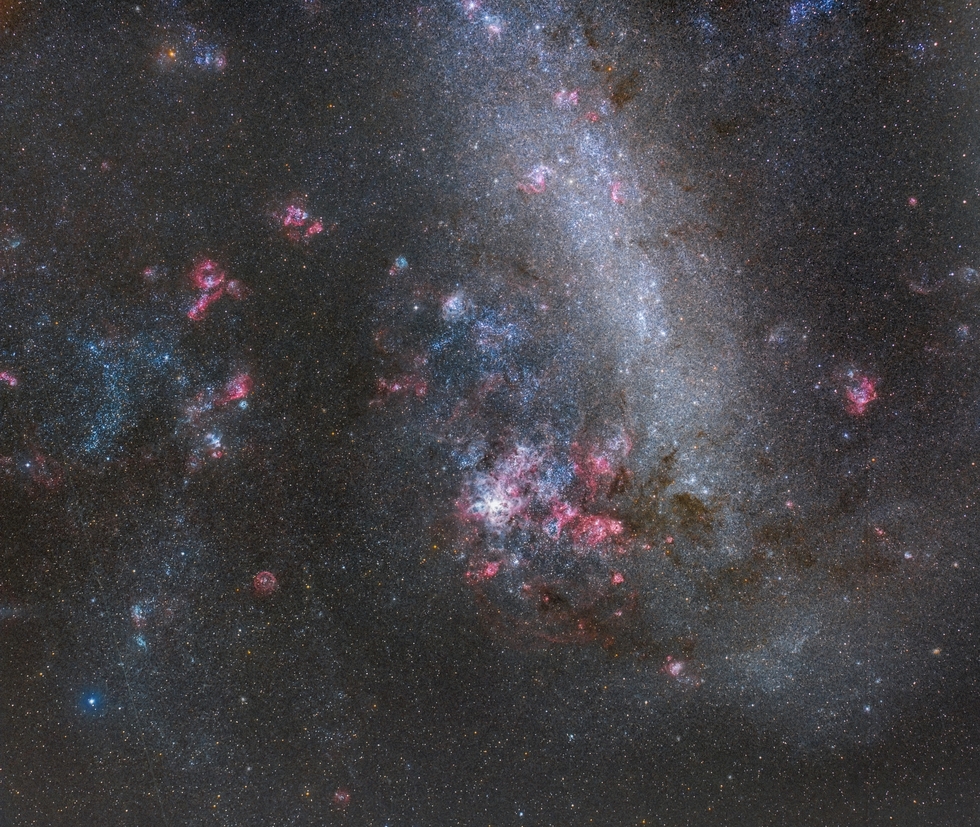
Acquisition: Advanced Requests
Telescope: AUS-2
Filters: Astrodon RGB 2GEN
Processing: SiriL, GIMP, Adobe PS, Starnet++, Adobe Lightroom CC
Large Magellanic Cloud by Reggie Jones

Acquisition: Advanced Requests
Telescope: CHI-5
Filters: LRGB
Processing: PixInsight
Large Magellanic Cloud (LMC) by Richard Leighton
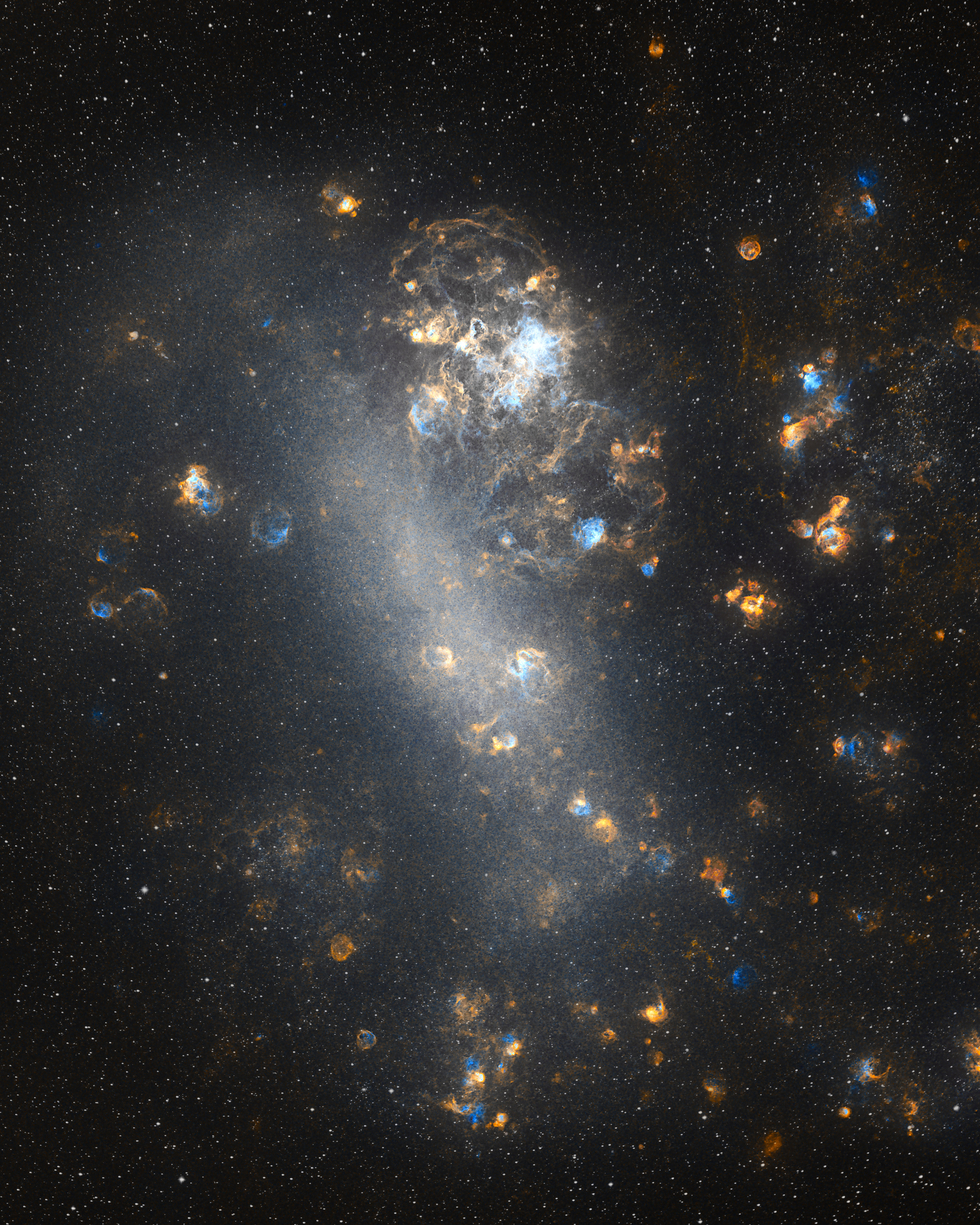
Acquisition: Advanced Requests
Telescope: CHI-5
Filters: Ha - 9x 300s, OII - 8x 300s, SII - 11x 300s
Processing: SHO (removing green) combined with HOO, and Ha also used as luminance
"Really looking forward to seeing this in person one day!
Instagram: @clearskyphotography " Richard Leighton
Large Magellanic Cloud by John Tipton
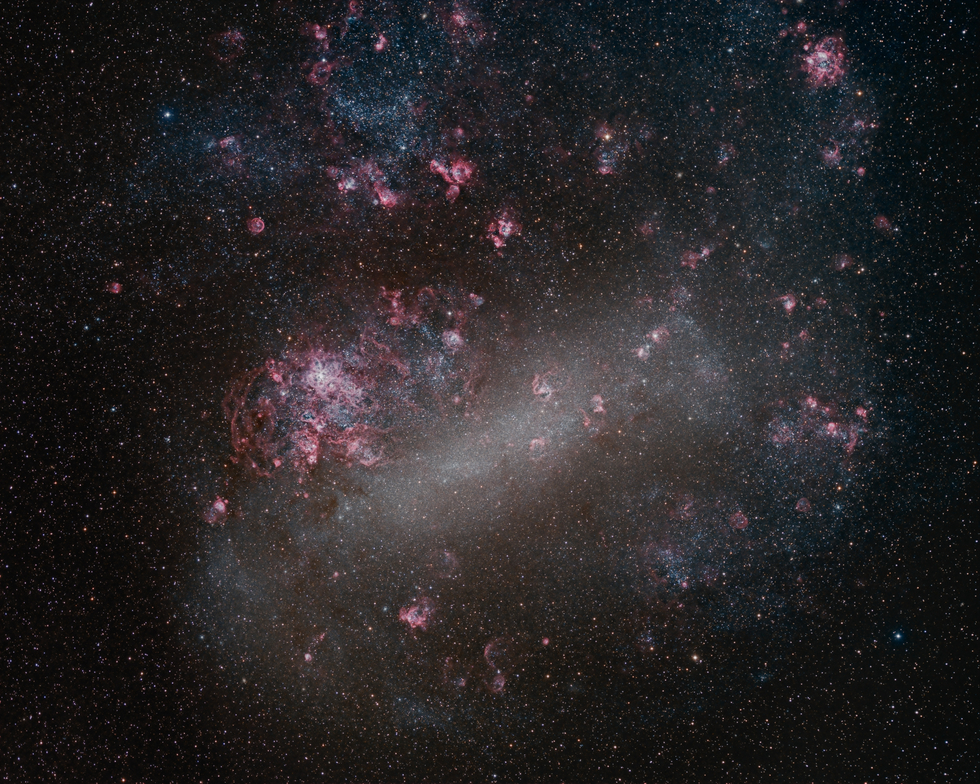
Acquisition: Advanced Requests
Telescope: CHI-5
Filters: L,R,G,B,Ha,OIII
Processing: CCDStack and Photoshop
"Used Ha and OIII narrow-band data blended into an LRGB image to help bring out the details. It is amazing how much can be seen in a galaxy located 160,000 light-years away." John Tipton
Large Magellanic Cloud by Amal BIJU
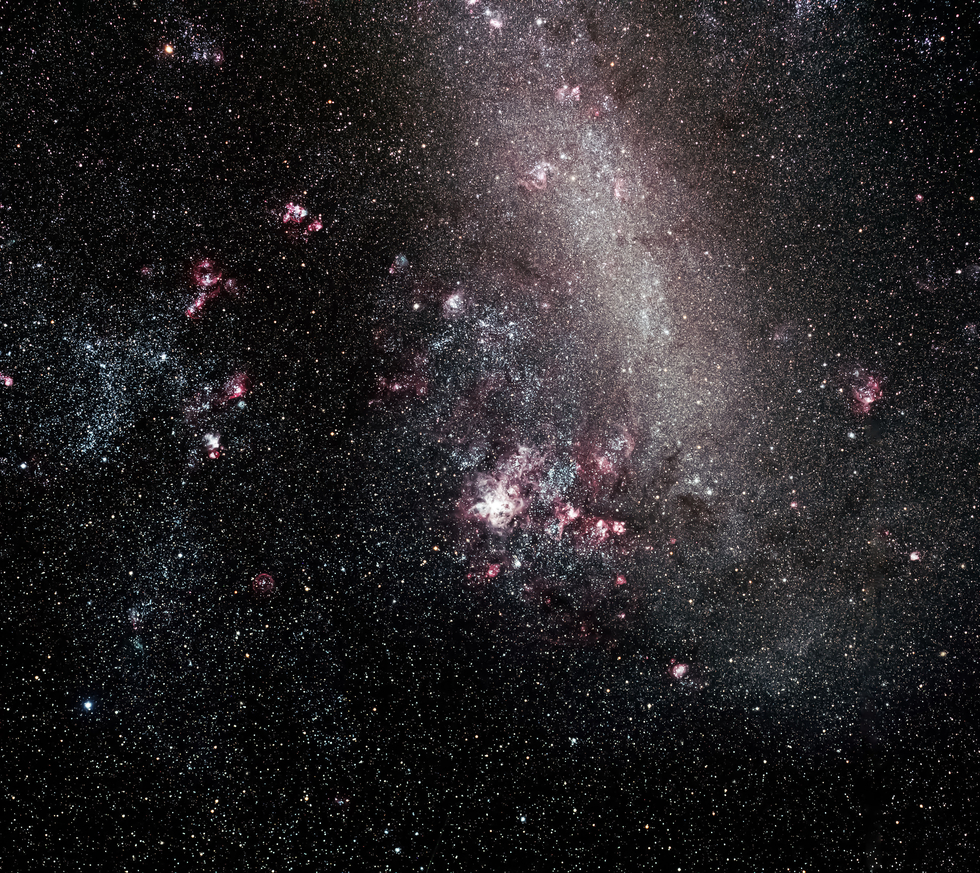
Acquisition: Advanced Requests
Telescope: AUS-2
Filters: Astrodon RGB 2GEN
Processing: Photoshop , LightRoom
LMC Acquired via Pro Datasets
Large Magellanic Cloud by Tommy Harris
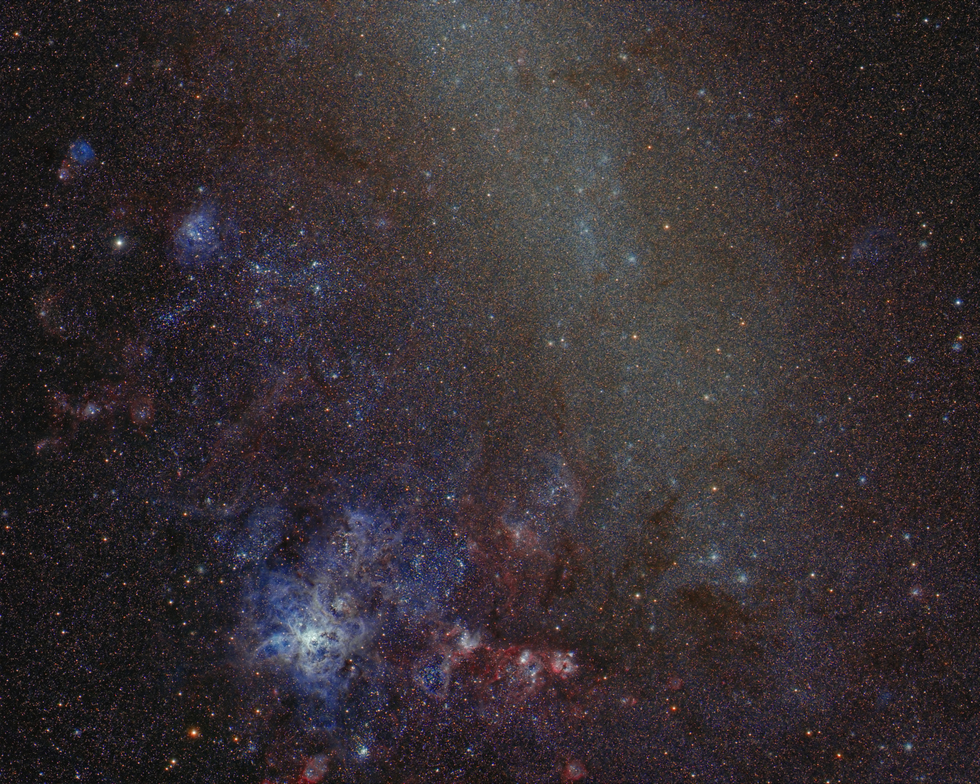
Acquisition: Pro Datasets
Telescope: CHI-6
Filters: LRGB
Processing: Pixinsight, Photoshop
LMC Acquired via One-Click Observations
Large Magellanic Cloud Narrowband by Nik Szymanek
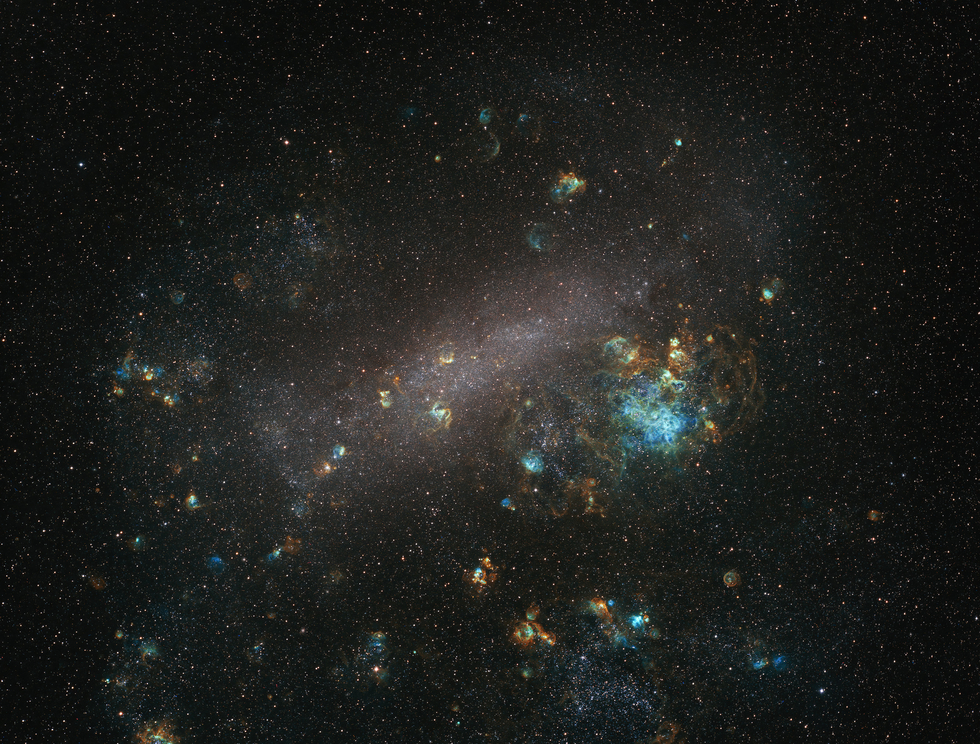
Acquisition: One-Click Observations
Telescope: CHI-5
Filters: Ha: 10m OIII: 10m SII: 10m
Processing: Maxim DL, Photoshop, PixInsight
Large Magellanic Cloud by Patrick Salou
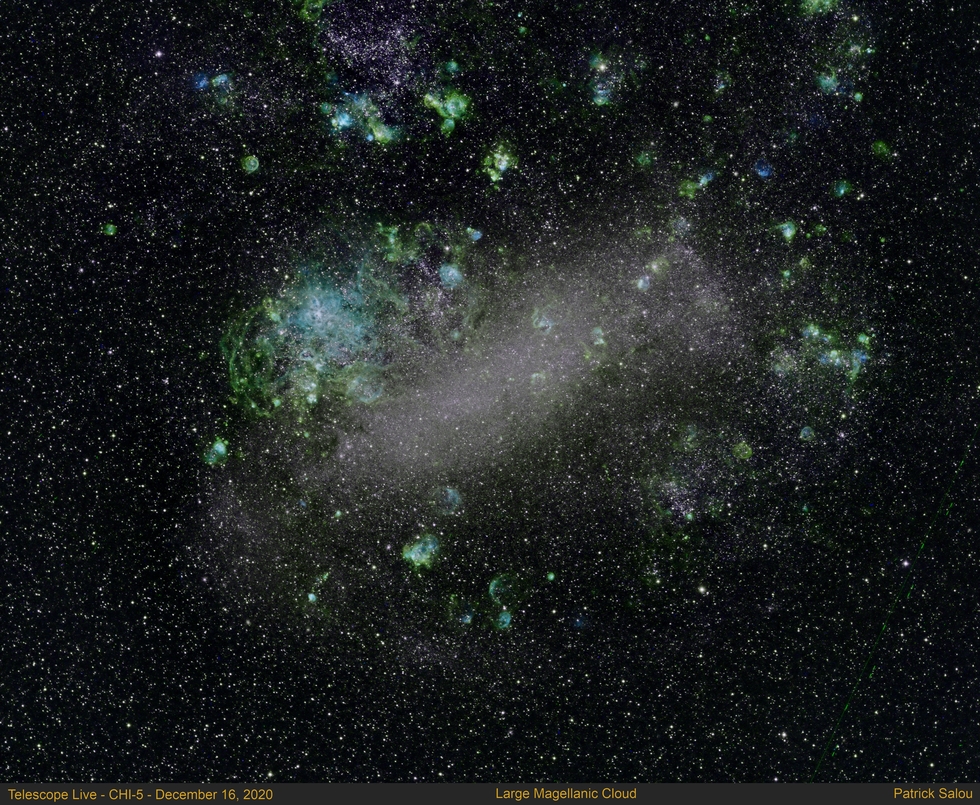
Acquisition: One-Click Observations
Telescope: CHI-5
Filters: Astrodon Ha (3nm), SII (3nm), OIII (3nm)
Processing: Deep Sky Stacker , Photoshop CC
"HSO, One-click Observation. An object I could never capture from my backyard in Europe! Happy to have the opportunity to post-process it thanks to Telescope Live." Patrick Salou
Large Magellanic Cloud in HaOO by Andre Becher
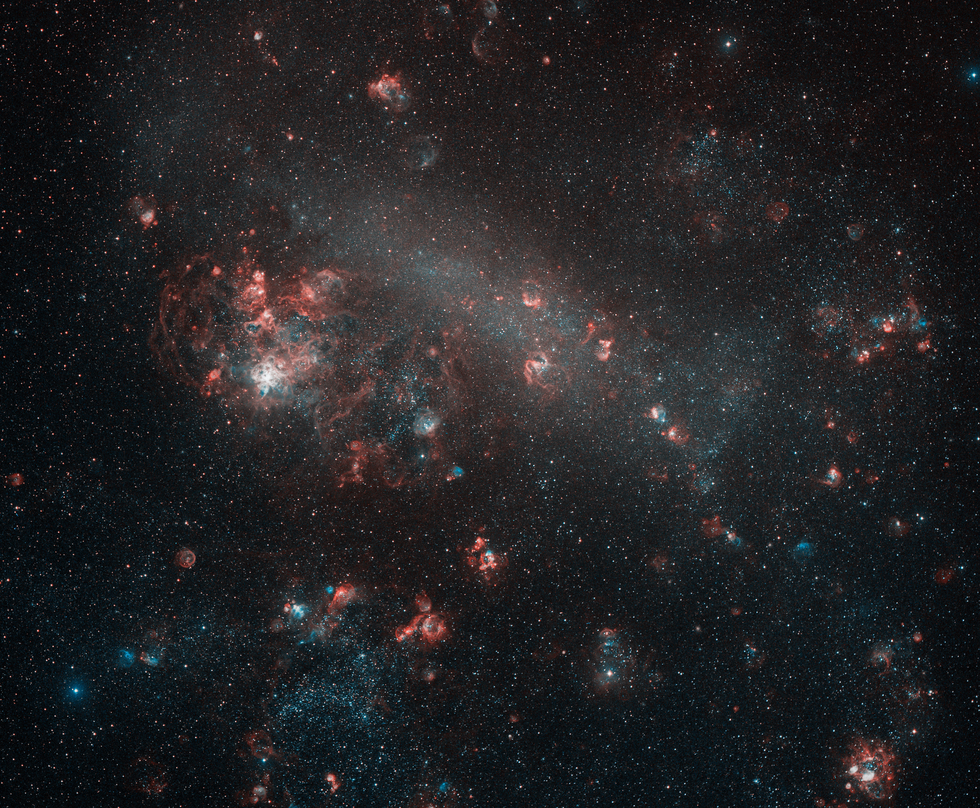
Acquisition: One-Click Observations
Telescope: CHI-5
Filters: SHO
Processing: Deep Sky Stacker , Photoshop CC
"Large Magellanic Cloud taken on November 30th 2020 with one click observation from CHI-5 - 10:10:10 on SHO as exposure. I first used the hubble palette on SHO but then decided to switch over to HaOO because I more like the reds and blues in the cloud. First time using HaOO to be honest." Andre Becher
Large Magellanic Cloud by ALAN Richards
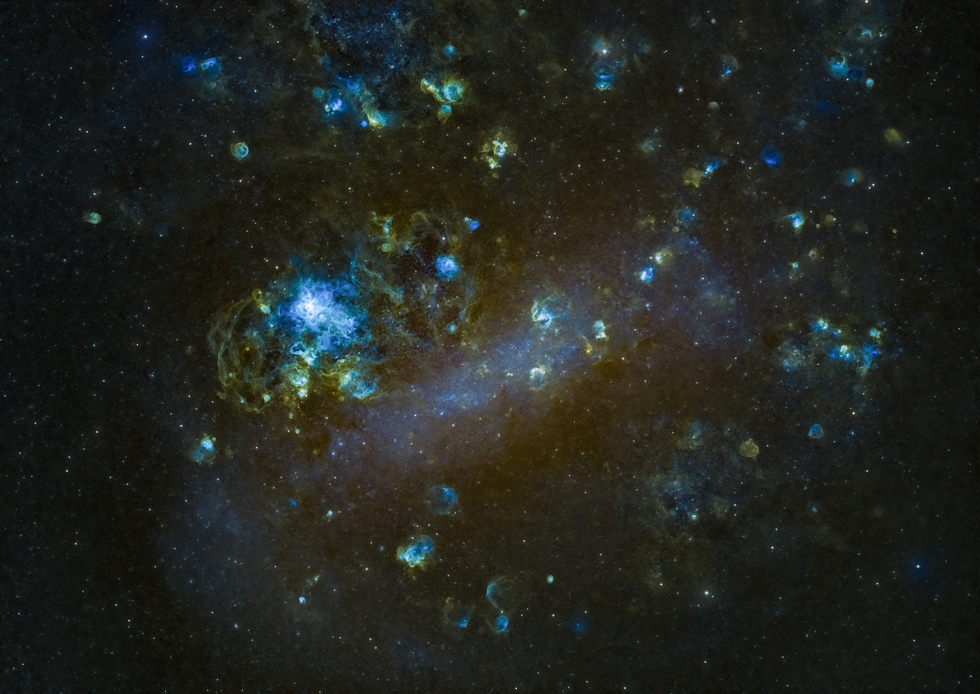
Acquisition: One-Click Observations
Telescope: CHI-5
Filters: Halpha, Sii, Oiii
Processing: Pixinsight, Photoshop, Topaz Labs Adjust, Topaz labs Sharpen
Large Magellanic Cloud by Ronan Hunt
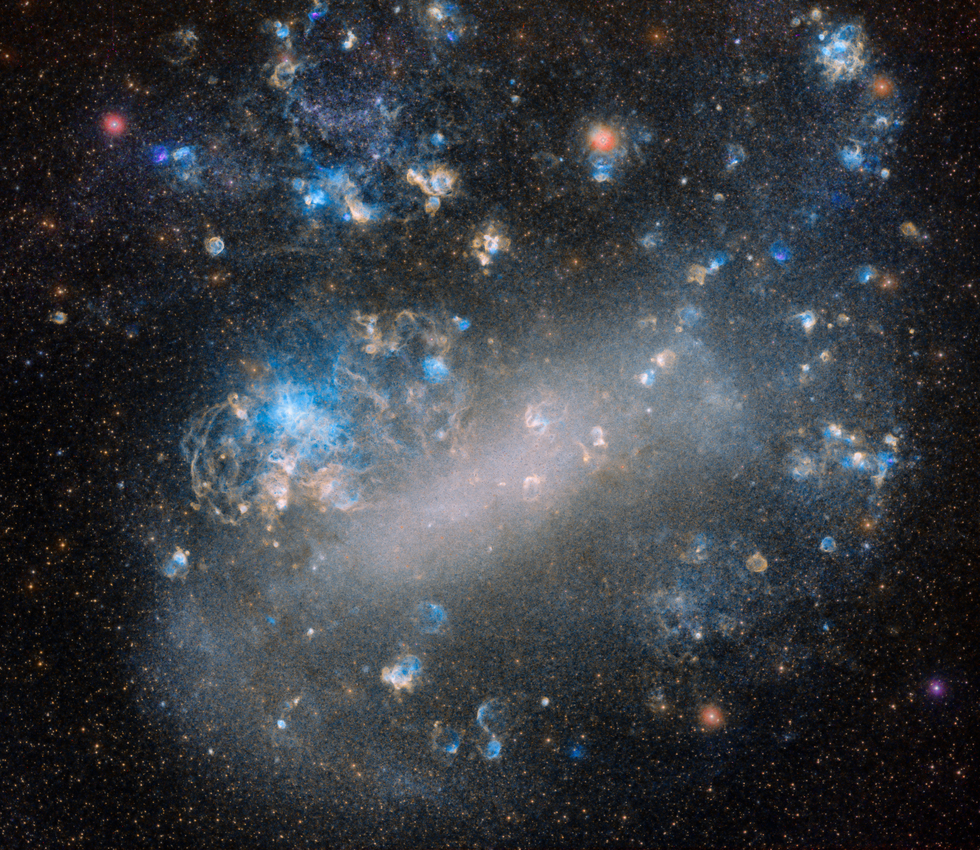
Acquisition: 2 One-Click Observations
Telescope: CHI-5
Filters: SHO
Processing: Pixinsight
1 hour of SHO data (20 mins each) using 2 One-Click Observations
Large Magellanic Cloud by Rip Smith
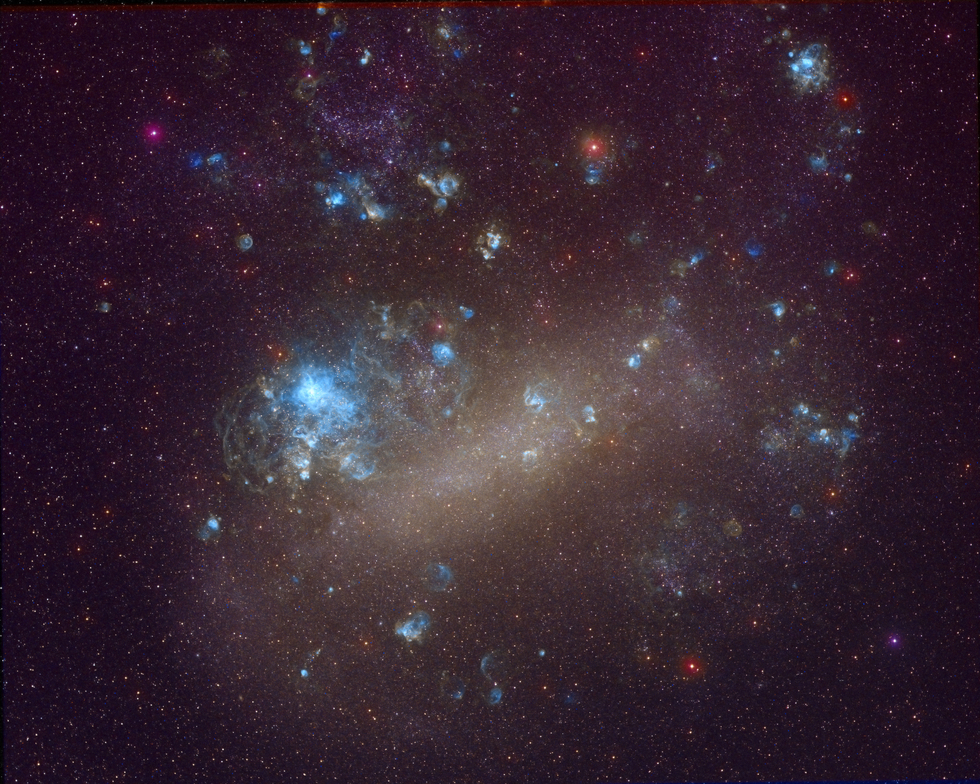
Acquisition: One-Click Observations
Telescope: CHI-5
Filters: Halpha, Sii, Oiii
Processing: Pixinsight, Photoshop
Large Magellanic Cloud by Jim DeLillo
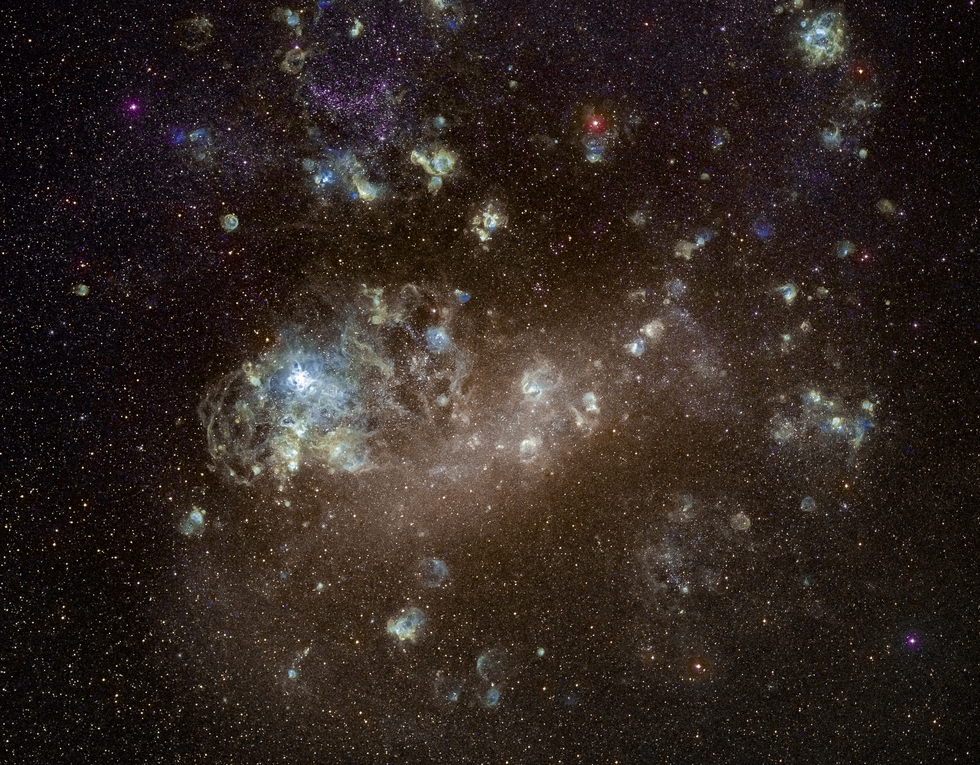
Acquisition: One-Click Observations
Telescope: CHI-5
Filters: Halpha, Sii, Oiii
Processing: PixInsight plus LightRoom
Large Magellanic Cloud by Jon Bursey
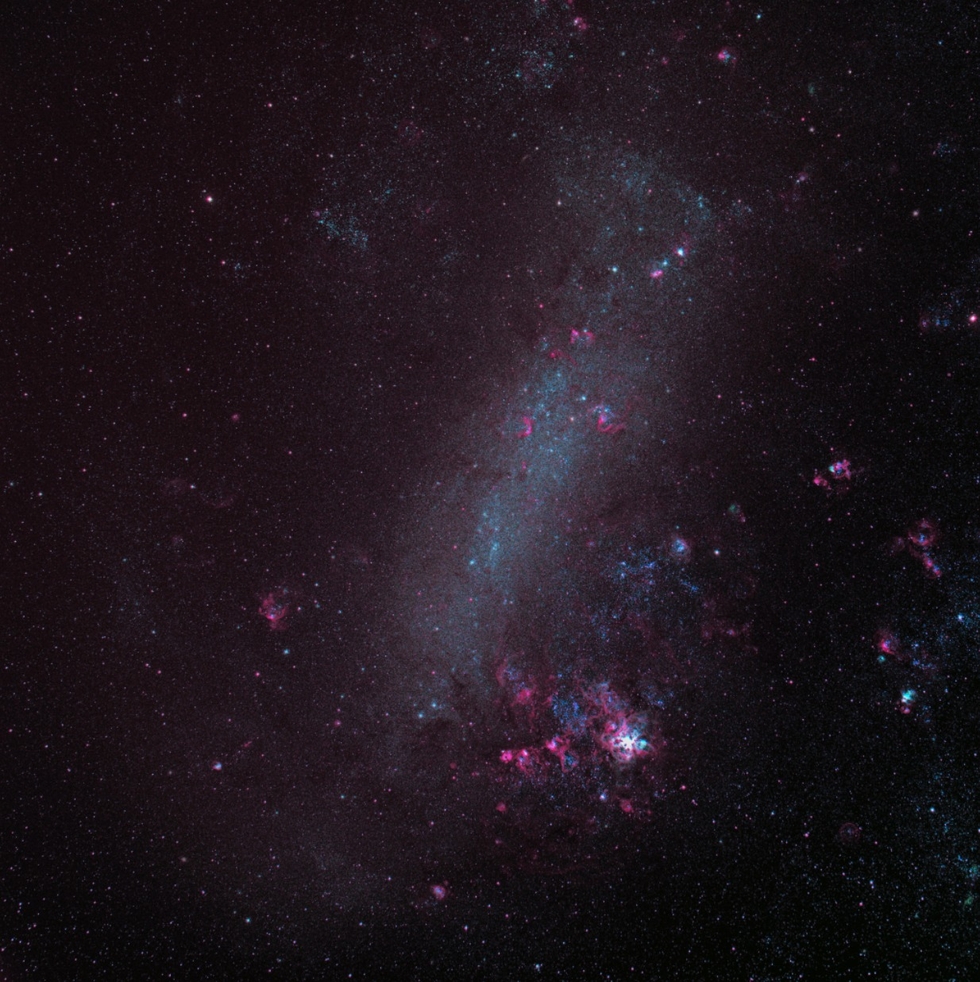
Acquisition: One-Click Observations
Telescope: AUS-2
Filters: RGB
Processing: Photoshop
Large Magellanic Cloud by Derek Warltier
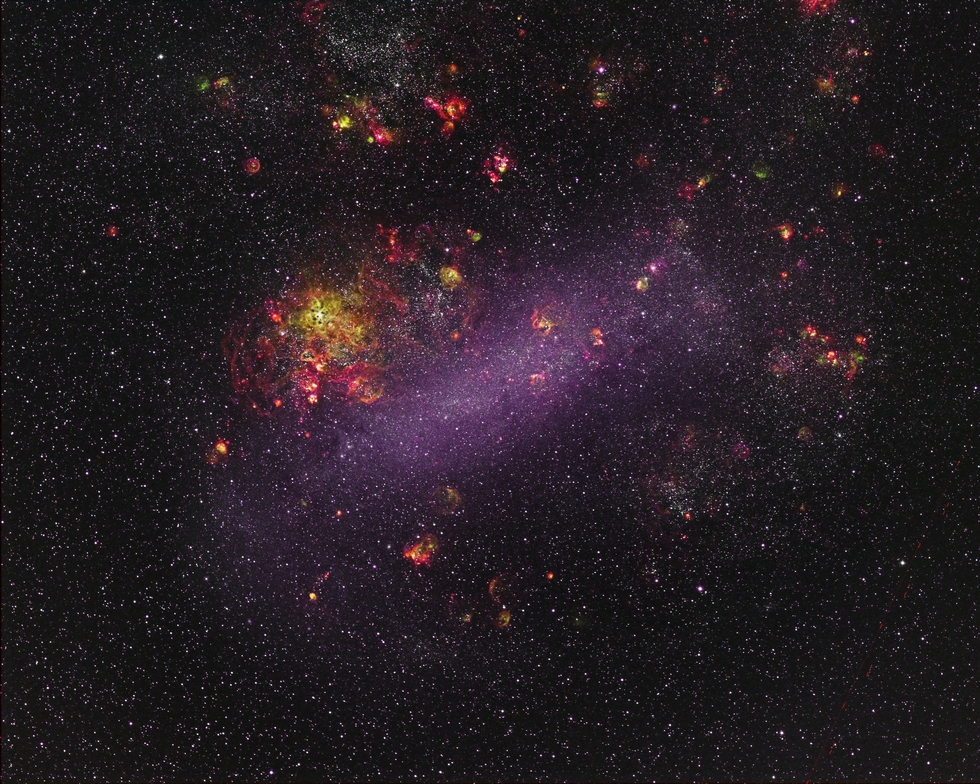
Acquisition: One-Click Observations
Telescope: CHI-5
Filters: SHO
Processing: PixInsight
One-Click Observations Narrow-band in CFHT Palette
Large Magellanic Cloud by Bernard Miller
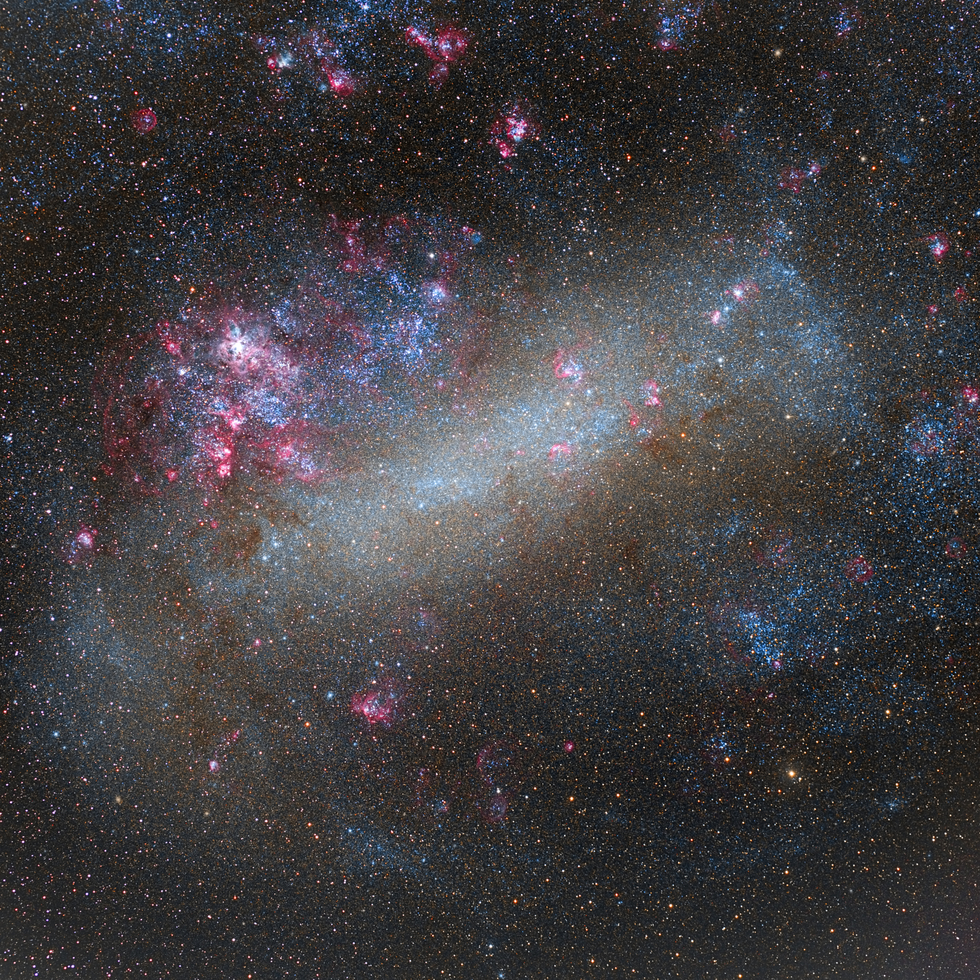
Acquisition: One-Click Observations
Telescope: AUS-2
Filters: Astrodon LRGB 2GEN
Processing: Pixinsight and Photoshop
Want to get some data of the Large Magellanic Cloud now?
On the Telescope Live app you can find the LMC in our Pro Datasets and One-Click Observations.
Of course, if you want to tweak every aspect of your data you can submit an Advanced Requests observable with all our telescopes in the Southern Hemisphere.
From our Pro Datasets:
- The Large Magellanic Cloud observed taken by Nik Szymanek with CHI-6 with 1h exposure. CHI-6 is our Officina Stellare RH200, a 20-cm F3 reflector, situated in the Rio Hurtado valley, Chile. It is equipped with a set of Astrodon astrophotography filters.
- The Tarantula Nebula, an H II region in the Large Magellanic Cloud observed by Ian Howarth with our CHI-2, exposed for 3h 10min. CHI-2 is an ASA 500N, a 50-cm F3.6 corrected Newtonian telescope, situated in the Rio Hurtado valley, Chile. It is equipped with a set of Astrodon astrophotography filters.
From our One-Click Observations:
- Over the next two weeks we scheduled three One-Click Observations using our AUS-2, the Takahashi FSQ-106ED (106 mm) F3.6 telescope equipped with a set of Astrodon astrophotography filters.
Image Credit:
Annotated LMC, Robert Gendler/ESO https://www.eso.org/public/images/eso1021d/
References:
[1] https://www.constellation-guide.com/large-magellanic-cloud/
